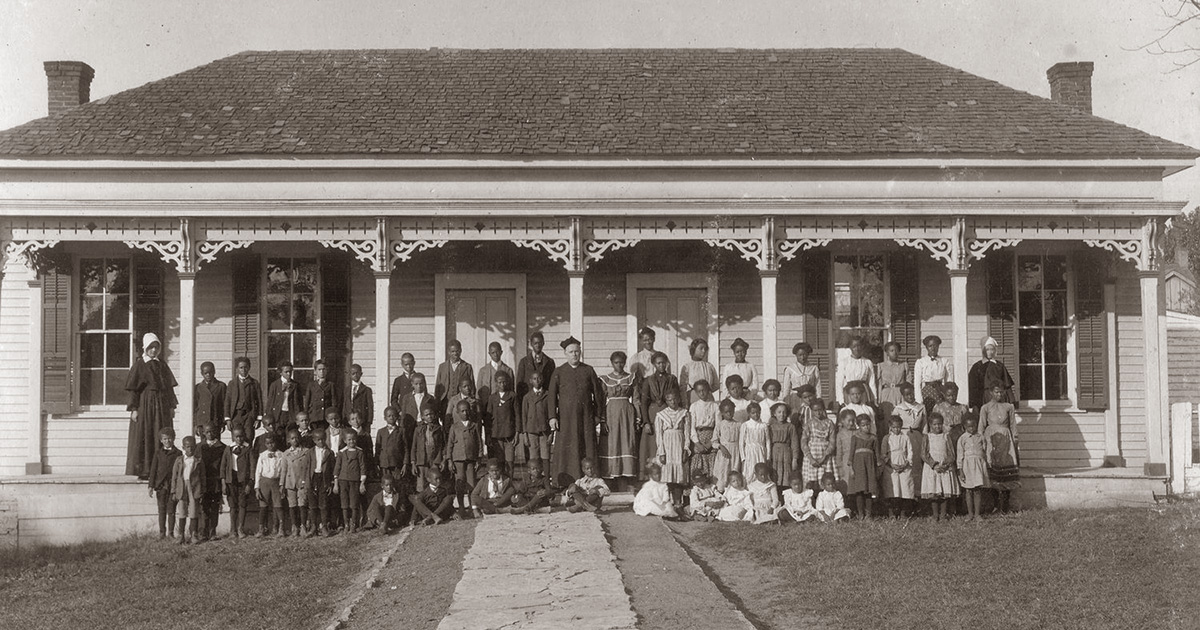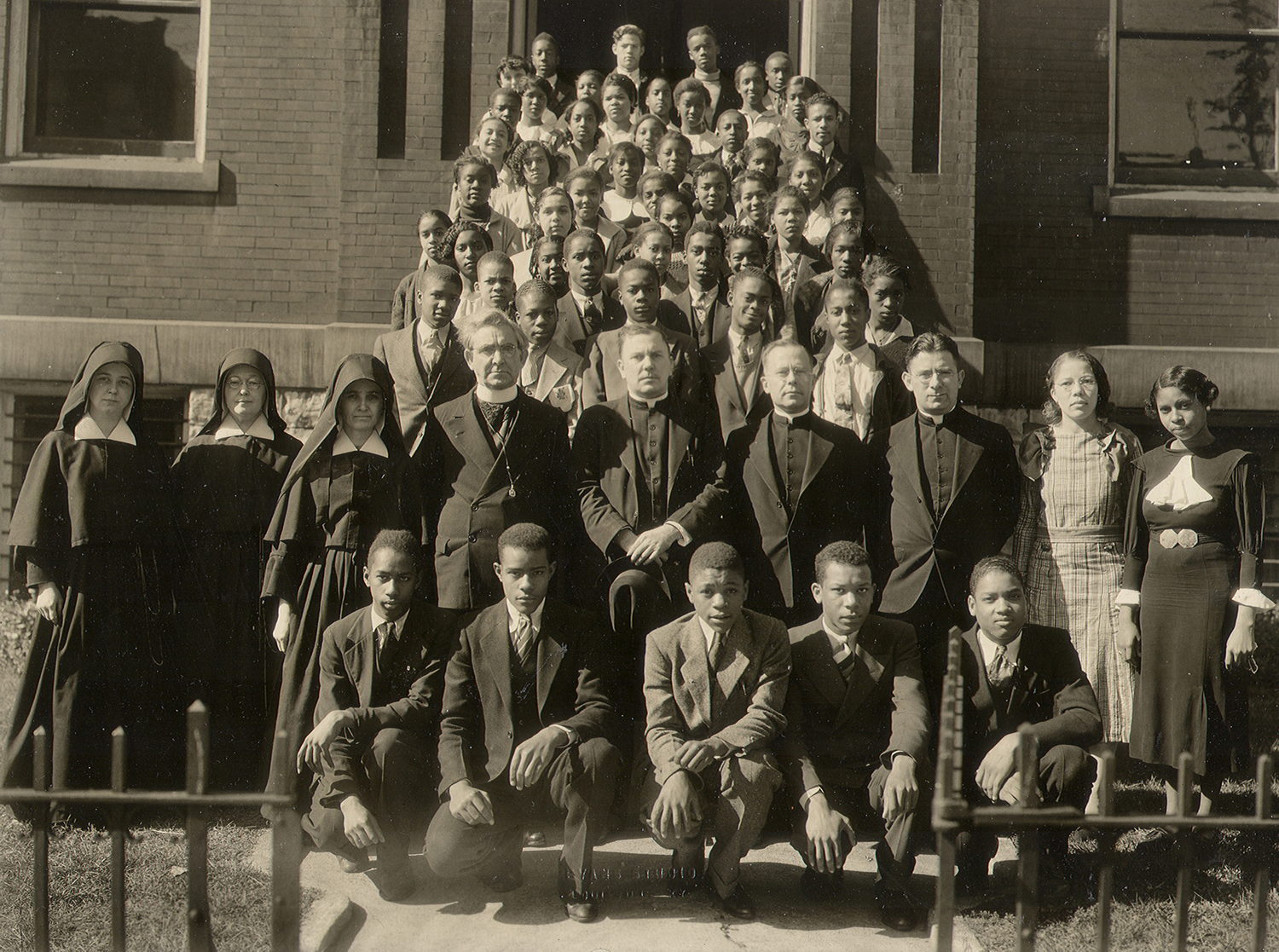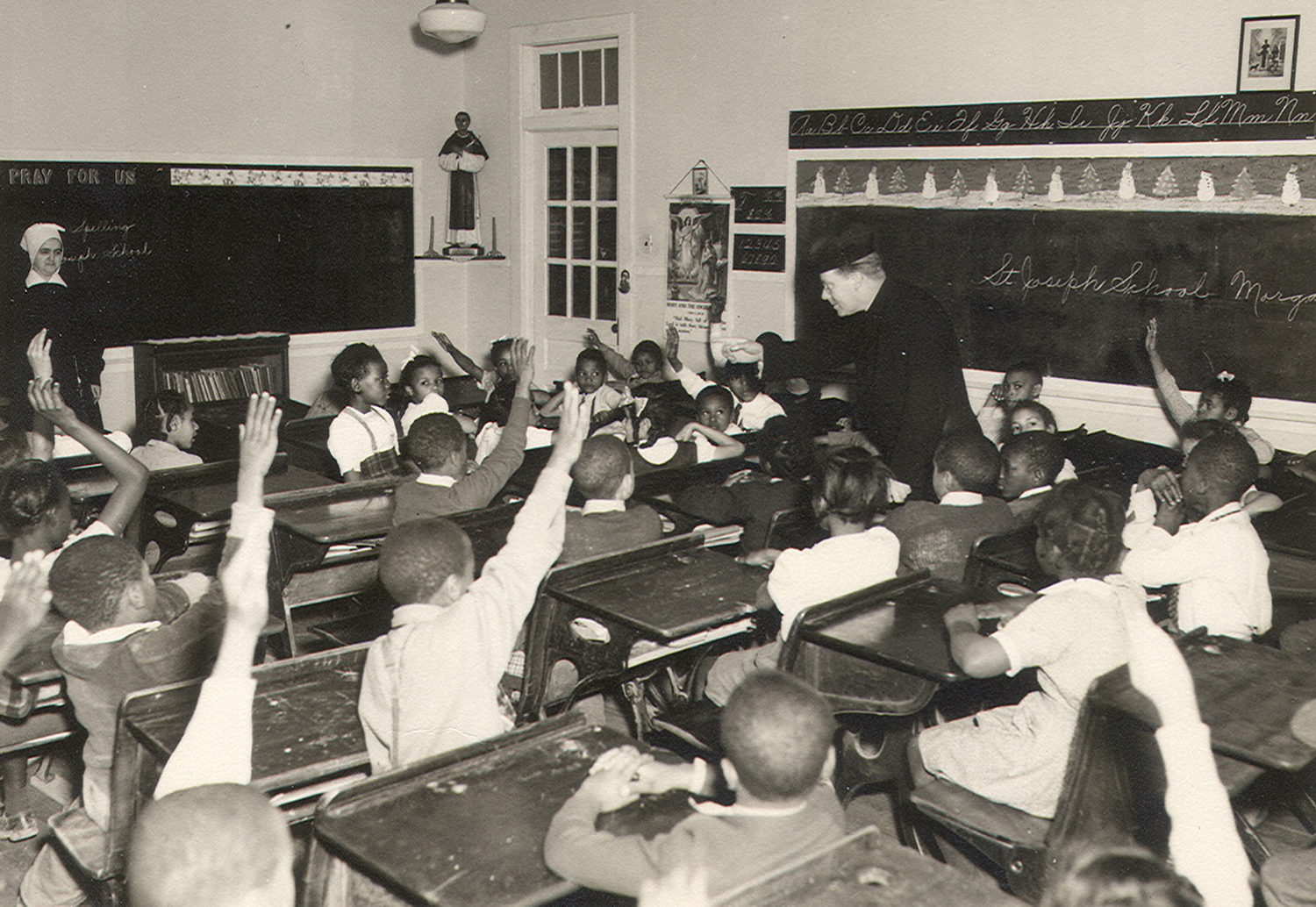The legacy of African American Catholic schools of the south and the Sisters who staffed them is a shining example of how education can empower and uplift communities. During a time when prejudice and discrimination persisted and little was being done to address the educational needs of former slaves and children in Black communities, women religious rose to the challenge to provide high-quality education and opportunities to many students of color.
In 1871, the Sisters of Charity of Nazareth began their formal ministry in education for African Americans with their work at St. Augustine School in Louisville. This marked the beginning of a long tradition of service in the field. St. Augustine Church and School were born from the encouragement of Louisville’s Bishop at the time, William George McCloskey, who recognized the need to address the education of African American students and implored help from priests in his diocese. Father John L. Spalding, later Bishop of Peoria, began raising funds to build St. Augustine and asked the Sisters of Charity of Nazareth to staff it. The school quickly grew to success, and high school classes were added in 1921. The school was accredited by the Kentucky State Department of Education in 1928 and went through several name changes, eventually being referenced simply as Catholic High School.
In the same year that the Sisters began their work at St. Augustine, they also started teaching at St. Monica School in Bardstown. Classes were being held in a one-room house that was later purchased and used as St. Monica School, with the SCNs invited to staff it. A new building was soon built and by 1912, the student body had grown to over 100.
For over a century, the Sisters of Charity of Nazareth continued their mission to educate African American students, operating schools in several states, including Kentucky, Alabama, Arkansas, Maryland, Ohio, and Tennessee.
One of the most notable schools was Holy Family High School in Ensley, Alabama. It opened in 1943 with just seven students and two Sisters of Charity of Nazareth. Holy Family became the first all-African American high school to be accredited in the state of Alabama and was known for the high achievements of its graduates. Despite the arrival of integration in the mid-1960s, many students continued to enroll at Holy Family and the SCNs continued to serve there until 1989.
The Sisters’ role in educating African Americans also extended to higher education. When the Commonwealth of Kentucky passed the Day Law in 1904, which prohibited teaching Black and White students in the same school, the Sisters obeyed the law, including at Nazareth College in Louisville. However, in 1950, the Day Law was amended to allow integration on a voluntary basis, and Nazareth College led the way by admitting 35 African American students for the first time.
As laws continued to change and integration provided more opportunities for African American students, the need for separate schools waned. By the end of the 1960s, these schools had integrated, closed, or merged with other schools. Yet, the impact of these Catholic schools and the Sisters who taught and administered at them cannot be overstated. These schools helped to break down barriers of discrimination and prejudice in communities by providing an equal chance at a high-quality education and opportunity to succeed. Through such schools, Catholic leaders rose in the African-American community and created a brighter future for generations to come.
Source: https://nazareth.org/










0 Comments